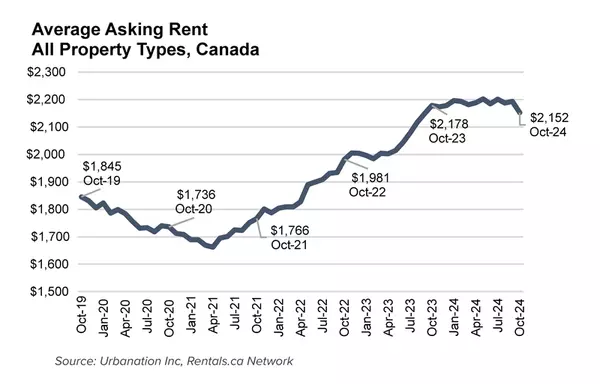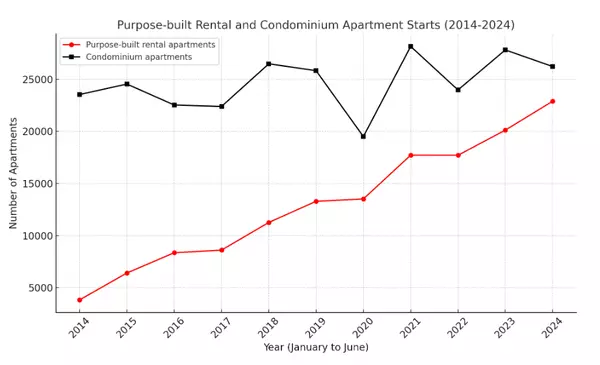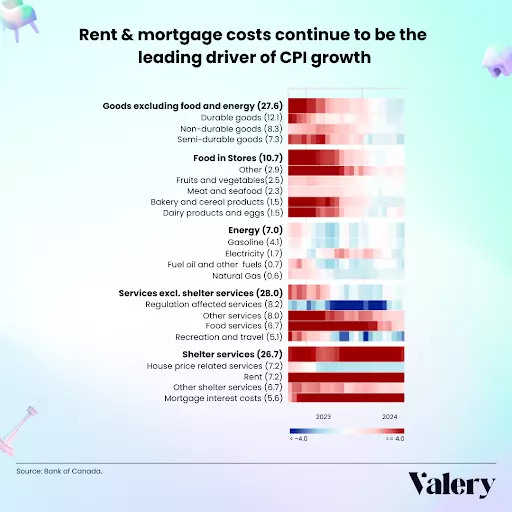
4 in 5 Canadians say housing crisis is shaping life decisions, survey finds
Homeownership is becoming a pipe dream for many Canadians, according to a new survey released by Habitat for Humanity Canada. Four in five Canadians now say that buying a home feels like a luxury, while 88 per cent of renters say the goal of owning a home in Canada has become out of reach. The organization’s third annual affordable housing survey looked at the broader implications of Canada’s housing crisis. An overwhelming 82 per cent of Canadians voiced deep concern over how the housing crisis is impacting health and well-being, while 78 per cent see homeownership as a critical factor in the country’s growing wealth gap. The findings show a clear, collective anxiety across generations, with younger Canadians bearing the brunt of housing-related challenges. “Canadians are sending a clear message: the housing crisis is no longer just about housing,” says Pedro Barata, CEO of Habitat for Humanity Canada. The shrinking middle class Survey data reveals concern that the scarcity of affordable housing is fragmenting communities and threatening the middle class, with 82 per cent of respondents worried about a potential decline in this socioeconomic group. Over half of Canadians report worrying about sacrificing essentials like food, education and living expenses to cover their housing costs. Meanwhile, 41 per cent of respondents say the stress alone of not being able to buy a home is difficult for them to manage. Younger generations forced to rethink milestones Canada’s housing crisis is causing younger generations to rethink life plans. Two-thirds of Gen Z Canadians and almost half of Millennials have considered delaying starting a family because they can’t afford a suitable home, while four in ten say they have fewer job opportunities because they had to move to a more affordable area. A notable percentage (29 per cent of Millennials and 25 per cent of Gen Z) say they would consider moving abroad to find affordable housing. The survey also reveals that 73 per cent of Gen Z respondents are anxious about saving enough for a down payment. Barata emphasizes that young Canadians rethinking or delaying major life decisions could lead to “a deep and lasting impact on future generations and society as a whole.” Despite the mounting challenges, Canadians overwhelmingly support the idea of homeownership, with 87 per cent believing it offers stability, and 81 per cent seeing it as a way to build a better future for their children. Calls for action As Canada’s housing crisis grows, the survey reveals a clear demand for political action. Seventy-five percent of Canadians believe that housing policy should transcend political divides, urging a unified approach to the crisis. However, 68 per cent are skeptical that the federal government will reach its goal of building 3.87 million new homes by 2031. Canadians want policy initiatives that reduce taxes and fees for first-time buyers, promote affordable homeownership and convert unused spaces into housing. “Homeownership can’t just be the privilege of the wealthy or lucky few,” says Barata. “At Habitat we see the transformational change that happens when families own their own home, affordably. The security and peace of mind benefit their health, economic opportunities and investments in their community. It benefits all of us.”

Average rent in Canada drops for first time since 2021
For the first time since July 2021, average asking rents for all residential property types in Canada saw an annual drop in October. According to the latest report from Rentals.ca and Urbanation, rents dropped 1.2 per cent compared to October 2023, bringing the average monthly rent to $2,152. This decline is primarily driven by decreases in larger cities, particularly in British Columbia and Ontario. Vancouver recorded a year-over-year drop of 9.1 per cent for one bedroom units, Burnaby, B.C. saw a 9.4 per cent decrease, and Toronto registered an 8.7 per cent decline. Calgary and Montreal also reported annual decreases of 4.3 per cent and 4.6 per cent, respectively. “It is a rare occurrence for rents to decline at the national level. This is happening as the key drivers of rent growth in recent years—a strengthening economy, quickly rising population and worsening homeownership affordability—are beginning to reverse,” says Shaun Hildebrand, president of Urbanation. “As a result, we can likely expect this trend for rents to continue in the near term, particularly as apartment completions remain at record highs.” Month-over-month, average asking rents fell 1.9 per cent in October, and are down 9.3 per cent from the annual increase posted in May. Smaller markets see big jumps While the more expensive markets saw declines, traditionally affordable markets saw steep annual increases. Saskatchewan registered a 17.1 per cent year-over-year increase in apartment rents in October, reaching an average of $1,358—still well below the national average. In Nova Scotia, asking rents for apartments increased at the second-fastest pace provincially, rising 9.6 per cent year-over-year to $2,298. Rent decreases by unit type In B.C., apartment rents for one-bedroom units fell the most, down 4.9 per cent annually to an average of $2,254. In Ontario, the largest annual decline in apartment rents was for two-bedroom units, which saw a 6.9 per cent decrease to an average of $2,583. In Quebec, declines in apartment rents were seen primarily in one-bedroom units, which fell 3.2 per cent year-over-year to an average of $1,681. Across most provinces, three-bedroom apartments fared best, seeing either the smallest rent declines or the largest increases.

Month-to-Month Leases vs. Fixed-Term Leases: Balancing Flexibility, Stability, and Profits
For real estate investors, selecting the right lease structure helps balance flexibility and stability. Both month-to-month and fixed-term leases have their pros and cons, and the right choice depends largely on your goals and market conditions. However, your decision has significant implications for rental income, tenant turnover, and the overall management of the property.Advantages of Month-to-Month LeasesMonth-to-month leases offer flexibility, making them an attractive choice for investors looking to maintain agility in a dynamic real estate market. With no long-term commitment, landlords can more easily adjust rental prices, typically on short notice, to reflect current market conditions, within legislated rules. This can be a major advantage in fast-rising rental markets, where rents are rapidly increasing, as investors can adjust rates as frequently as needed to keep up with local trends.For investors who are considering selling or redeveloping their property, month-to-month leases provide additional benefits. The short-term nature of these agreements allows landlords to vacate the property relatively quickly, which is ideal if market conditions suggest a higher return through sale or redevelopment. Investors are not tied down by long-term agreements that could delay such plans or complicate negotiations with potential buyers. The ability to offer the property with vacant possession can be a key selling point in a hot market where buyers may want to take immediate control.In markets where vacancy rates are low, the flexibility of month-to-month leases may also allow investors to fill their properties more quickly, especially when tenants are looking for short-term housing solutions. This can help reduce downtime between leases, which can otherwise eat into profits.Drawbacks of Month-to-Month LeasesDespite the flexibility month-to-month leases offer, they come with a significant downside: lack of income stability. Tenants can terminate the lease with minimal notice, leading to unpredictable vacancies and potential periods of zero rental income. This can make month-to-month leases a risky choice for investors who rely on consistent cash flow to cover mortgage payments, maintenance costs, or other expenses.Moreover, in areas with slower-growing rental markets or during economic downturns, the ability to raise rents frequently becomes less beneficial, and the high turnover associated with month-to-month leases can lead to higher vacancy rates. Frequent tenant turnover also means increased costs related to advertising vacancies, screening new tenants, and preparing units for the next occupant, adding to the unpredictability of rental income.Properties with month-to-month leases may also be viewed less favourably by lenders when investors are seeking financing. Financial institutions typically prefer properties with stable, long-term rental agreements as they provide a more predictable income stream. Thus, for investors relying on financing to grow their portfolio, the instability of month-to-month agreements could pose challenges.Advantages of Fixed-Term LeasesFixed-term leases, on the other hand, offer stability and predictability. With a fixed-term agreement, tenants commit to staying for a specified period, usually ranging from six months to a year or more. This provides investors with the security of knowing they will have consistent rental income for the duration of the lease. Such stability allows for better financial planning and budgeting, as landlords can predict their cash flow and make informed decisions about reinvestment, maintenance, and potential expansions to their property portfolio.In areas with steady or slow rental growth, fixed-term leases ensure that the property remains occupied for extended periods, reducing the likelihood of vacancies. Additionally, many fixed-term leases include clauses that make it difficult for tenants to break the lease early without incurring penalties. This provides landlords with added protection against loss of income and allows for better financial planning in both the short and long term.Renters often appreciate the security of knowing they will not face sudden rent increases or be required to vacate at short notice, particularly in markets with rising rents or limited housing availability. A fixed-term lease can attract reliable tenants who prioritize stability, potentially leading to longer-term relationships, further reducing turnover and associated costs.Drawbacks of Fixed-Term LeasesHowever, the stability offered by fixed-term leases can come at the cost of flexibility. In rapidly appreciating markets, landlords may find themselves locked into a rental rate that quickly becomes outdated, preventing them from capitalizing on rising rents. It also means that investors can miss out on prospective tenants seeking short-term housing, such as students. Additionally, fixed-term leases can make it more challenging for investors to sell their property quickly if an attractive offer arises. Potential buyers may be deterred if they are forced to honour existing leases, especially in cases where rental rates are below market value.Balancing Flexibility and StabilityYou can opt for a hybrid approach to balance the benefits of both lease types, by starting tenants on a fixed-term lease, and then offering the option to switch to a month-to-month lease at the end of the term. This lets you lock in stable rental income while maintaining the flexibility to adapt to future market changes or investment opportunities.You should also consider the location of the property. In areas with high demand and rapid population growth, a month-to-month lease can provide the flexibility to maximize rental income in a competitive market, whereas a fixed-term lease may be better in areas with slower rental growth or more transient populations.Ultimately, the choice between a month-to-month lease and a fixed-term lease depends on your goals, risk tolerance, and the local market conditions, but you can tailor your lease strategies to meet your needs and maximize your returns.
Categories
Recent Posts











